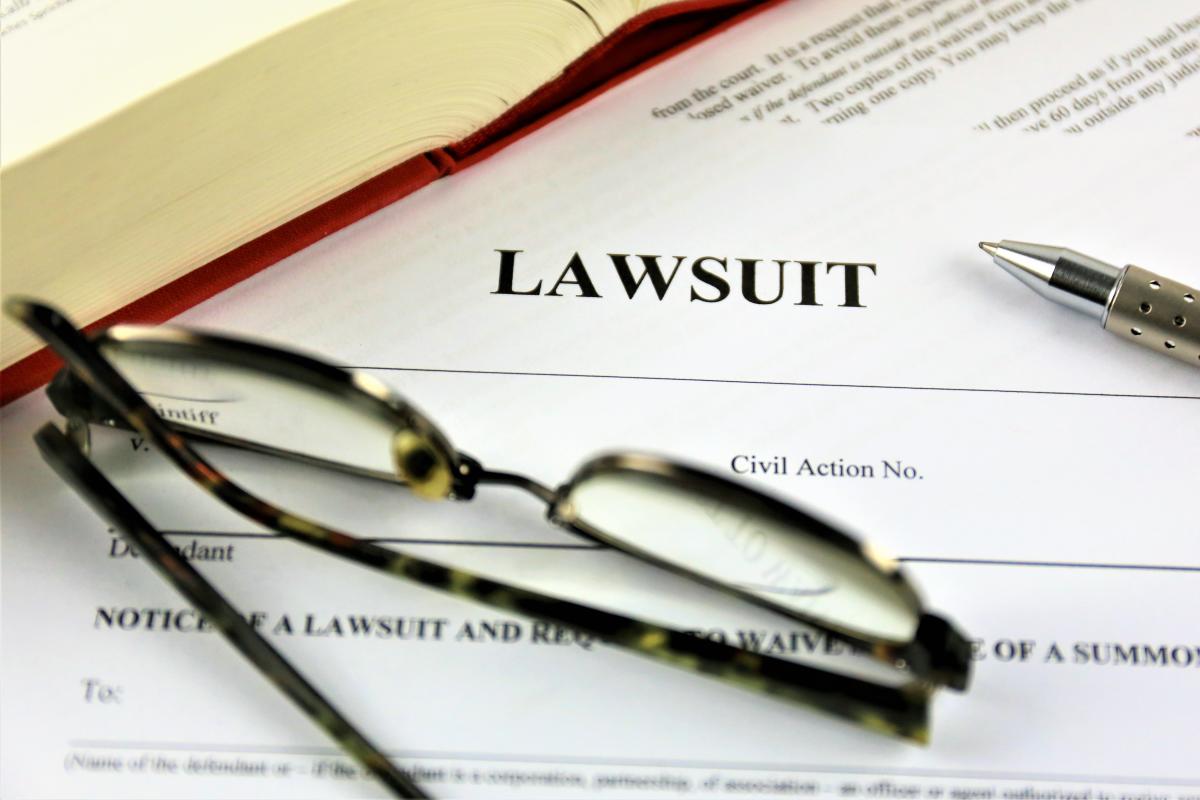How To File a Birth Injury Lawsuit

According to recent statistics, roughly 10,000 babies are born daily being in the United States. Unfortunately for some mothers and babies, it can be a traumatic, dangerous, or sometimes even fatal experience. A birth injury refers to an impairment of the newborn’s body structure or function due to a detrimental event occurring at birth. A few examples of scenarios that may lead to serious birth injuries are when doctors, nurses, and other attending medical staff are responsible for any of the following:
Neglecting to treat maternal health issues throughout the course of a pregnancy
Failure to monitor or anticipate birth complications, such as a twisted umbilical cord
Improper use of medical birthing equipment, such as forceps
Ignoring signs of fetal distress, such as changed heart rate or oxygen levels
Improper or inadequate postnatal care of mother or newborn
Avoidable birth injuries resulting from medical malpractice or negligence can have life-altering effects, which can often be physically, emotionally, and financially challenging. If your family has cause to believe that your newborn sustained birth injuries as a result of medical malpractice, and you are wondering how to file a birth injury lawsuit, you should immediately seek the advice of a qualified attorney.
How Long Do I Have to File a Birth Injury Lawsuit?
The legal window of time for filing any lawsuit, also known as the statute of limitations, varies from state to state.
In all states, people have at least one year to file, unless the entity being sued is a government agency, in which case the statute of limitations is likely to be much shorter. In most states, the standard statute of limitations for a civil trial is between two and three years, and the countdown clock starts when the injury occurred, or whenever it was discovered.
However, there may be exceptions to these timelines. For example, if a child is filing a lawsuit on their own behalf, the countdown for the statute of limitations would begin on their 18th birthday, rather than on the date the injury was discovered. The circumstances surrounding the injury may also affect the timeframe. For example, if a child passes away several years after their birth injuries were sustained, the statute of limitations on filing a wrongful death lawsuit would likely be extended. Because the laws differ from state to state, and can be impacted by minute details of a case, it’s important to consult a knowledgeable attorney before filing a lawsuit.
How To Start a Birth Injury Lawsuit
Depending on the circumstances of your case, and the state where the incident occurred, the steps to file a birth injury lawsuit may vary. As a general rule, however, you’ll want to proceed according to the following guidelines.
1: Find a Qualified Attorney
In the case of a birth injury lawsuit, you’ll either be looking for a medical malpractice lawyer, or a personal injury lawyer. Consulting with a lawyer before committing is relatively standard. You’ll want to find an attorney who is experienced and empathetic. Some lawyers offer free consultations for new clients, but this is not a guarantee. Ask up front whether or not they have a consultation fee.
Once you’ve selected the attorney best suited to your needs, you will likely enter into a formal contract with them. This may involve paying a retainer fee to lock down their services. Be sure to ask them directly about what their fee structure is. Do they work on contingency? Or do they charge a flat rate? Make sure you understand how your lawyer plans to bill you, and what, if anything, you will need to pay up front.
2: Gather Evidence
Work with your attorney to form an outline of what exactly happened. Were there witnesses? If so, you’ll want them to submit written testimonies, called affidavits, of what they saw, heard, or participated in. Your attorney should also request the following information from your medical care team:
Prenatal medical records
Delivery records and notes
Records of postnatal care for baby
Records of postnatal care for mom
3: Send a Written Demand
In many states, you will be required to send a written demand letter to whomever you are suing. The letter is intended to make them aware of the impending lawsuit. When writing it, explain what injuries were incurred by the defendant(s). State what compensation you are requesting, and/or how much you are willing to settle for outside of court. Provide your full contact information. The letter should be mailed via certified mail, with a return receipt requested. Before you send it, make a copy for your records. Your attorney will likely help you with all of this.
4: Try to Reach a Settlement
Once the defendants have received your demand letter, they may make one of the following decisions:
Agree to pay the amount of compensation that you have requested
Make a counteroffer and begin the negotiation process
Ignore your demand letter and/or deny the allegations
More often than not, such lawsuits will go through mediation and arbitration in hopes of reaching a settlement out of court. For medical practitioners, avoiding the negative publicity that a malpractice suit would bring is a key factor in settling out of court. For both parties, this method of dispute resolution also tends to be less costly and less time-consuming. Agreements reached this way are considered legally binding.
5: File a Lawsuit
If an agreement cannot be made through mediation and arbitration, your attorney will file all of the necessary paperwork with the appropriate court in the county where the birth injury occurred in order to get the lawsuit started. They will also attend to any related court fees. Depending on your circumstances, they will file filing a medical malpractice, or wrongful death lawsuit. In either case, you will become the plaintiff, and the person(s) you are suing will become the defendant(s). Once the court has processed your lawsuit, they will notify the defendant(s).
6: Go Through Discovery
The discovery process involves lawyers from both sides gathering as much evidence as possible through the exchange of information, sworn testimonies, witness and expert interviews, depositions, and in-depth research into injury laws and/or standard medical practices. Medical records and bills that have not already been gathered will also be retrieved at this time.
7: Go to Trial
Even after a lawsuit has been filed, a defendant may decide to settle out of court. In the event that no out-of-court settlement can be reached, your case would go to trial. Evidence and testimony from both sides would be presented before a judge and jury, who ultimately decide the verdict.
How Long Does a Birth Injury Lawsuit Take?
Unfortunately, there is no set timeline for lawsuits nor guarantee that a settlement will be quickly reached. Every case has its own unique set of circumstances and may take months, or even years to be resolved, depending on the severity and complexity of the charges.
Will My Birth Injury Lawsuit Go to Court?
While there is always a chance that it may, it is unlikely that your birth injury lawsuit will go to court. The exact percentage is debatable. However, recent statistics suggest that the vast majority of lawsuits, perhaps up to 95 or even 97%, settle outside of court before going to trial. Here are some factors that may determine whether or not your case does go to court:
How severe are the charges?
What was the defendant’s response to your demand letter?
Are both parties open to mediation and arbitration?
Resources for Families
Children who have suffered traumatic birth injuries may be subject to a lifetime of physical, emotional, and financial challenges. Ongoing medical expenses, and the cost of care and medically necessary equipment or housing can become crippling. If the event that a child dies from their birth injuries, funerary costs may also be challenging. Filing a lawsuit to seek justice and appropriate compensation to help with these expenses may not be enough to cover a lifetime of unexpected bills. Nor will any financial compensation awarded in a lawsuit take away the grief that can come from birth injuries or death. If you need additional support, you may find some help below.
Help with Disability Case Management and Financial Aid
The Patient Advocate Foundation is a national non-profit organization that provides case management assistance and financial aid to Americans with chronic, life-threatening, and debilitating disabilities. You can call them Mon - Fri, from 8:30 am to 5:00 pm EST, at 1-800-532-5274
Planning for the Future
The Arc of the United States is a national organization whose mission is to promote and protect the rights of those with intellectual and developmental disabilities and to actively support their full inclusion and participation within the community throughout their lives. Contact them at 202-534-3700
Supplemental Security Income
For SSI benefits, the following requirements must be met:
For Children:
Are under age 18 and have physical or mental condition(s) that very seriously limit their daily activities for a period of 12 months or more or may be expected to result in death
Live in a household with limited income (benefits based on need) or resources.
Financial Guidance
As part of the National Disability Institute, the Financial Resilience Center is an online hub of information that provides guidance about becoming financially resilient during tough times for people with disabilities and chronic health issues.
Grief support
Grieving.com is one of the oldest grief support communities on the internet. They serve over 250k people annually, from more than 100 different countries and all walks of life. Their goal is to provide grief support through community fellowship and interaction. There are some helpful and personal discussions happening in the forums found on this site.
Founded over 50 years ago, The Compassionate Friends is a non-profit organization that offers personal comfort, hope, support, friendship, and understanding to bereaved families who have experienced the death of a child. They offer their support via local chapter meetings, virtual chapter meetings, and online communities. They have over 600 chapters in all 50 states, and Washington, D.C. Their National office is located in Wixom, MI. You can reach them at (877) 969-0010.
Expertise.com StaffAuthor
Step into the world of Expertise.com, your go-to hub for credible insights. We don't take accuracy lightly around here. Our squad of expert reviewers, each a maestro in their field, has given the green light to every single article you'll find. From rigorous fact-checking to meticulous evaluations of service providers, we've got it all covered. So feel free to dive in and explore. The information you'll uncover has been stamped with the seal of approval by our top-notch experts.

![How Much Does a Birth Injury Lawyer Cost? [2023] DUP IMAGE](https://images.ctfassets.net/k00sbju4hbzq/14o36UI4eEh3GDQQqxKHxe/f3736140ec537a1c22e86b0a9809a565/Depositphotos_153078350_XL.jpg?fit=fill&w=384&q=75)


